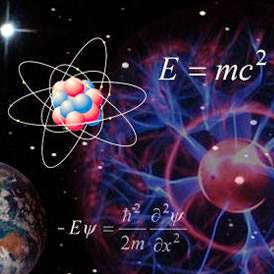 |
| Four flavours: X(5568) has no charm quark/antiquark pair. (Courtesy: Shutterstock/paul_june) |
Topics: Particle Physics, Quantum Mechanics, Quarks, Theoretical Physics
A new particle that is a bound state of four different flavours of quarks has been discovered by physicists working on the DØ experiment at Fermilab *. Called X(5568), the particle has a mass of about 5568 MeV/c2, and appears to contain "up" and "bottom" quarks as well as "down" and "strange" antiquarks.
Although other tetraquarks have previously been identified, X(5568) is the first in which all of the quarks have different flavours, which could affect our understanding of how quarks interact with each other. The discovery is also notable because X(5568) is produced at a much higher rate in proton–antiproton collisions than had been expected.
The particle was discovered by sifting through data acquired by DØ – an experiment that ran at Fermilab's Tevatron proton–antiproton collider from 2002 to 2011. The statistical significance of the discovery is 5.1σ, which puts it just above the 5σ required for a discovery in particle physics.
* * * * *
* And the X(5568) is not just any new tetraquark. While all other observed tetraquarks contain at least two of the same flavor, X(5568) has four different flavors: up, down, strange and bottom.
“The next question will be to understand how the four quarks are put together,” says DZero co-spokesperson Paul Grannis. “They could all be scrunched together in one tight ball, or they might be one pair of tightly bound quarks that revolves at some distance from the other pair.”
Four-quark states are rare, and although there’s nothing in nature that forbids the formation of a tetraquark, scientists don’t understand them nearly as well as they do two- and three-quark states.
This latest discovery comes on the heels of the first observation of a pentaquark—a five-quark particle—announced last year by the LHCb experiment at the Large Hadron Collider.
 |
| Image Source: Fermilab |
Physics World: Fermilab bags a tetraquark, Hamish Johnston

No comments:
Post a Comment